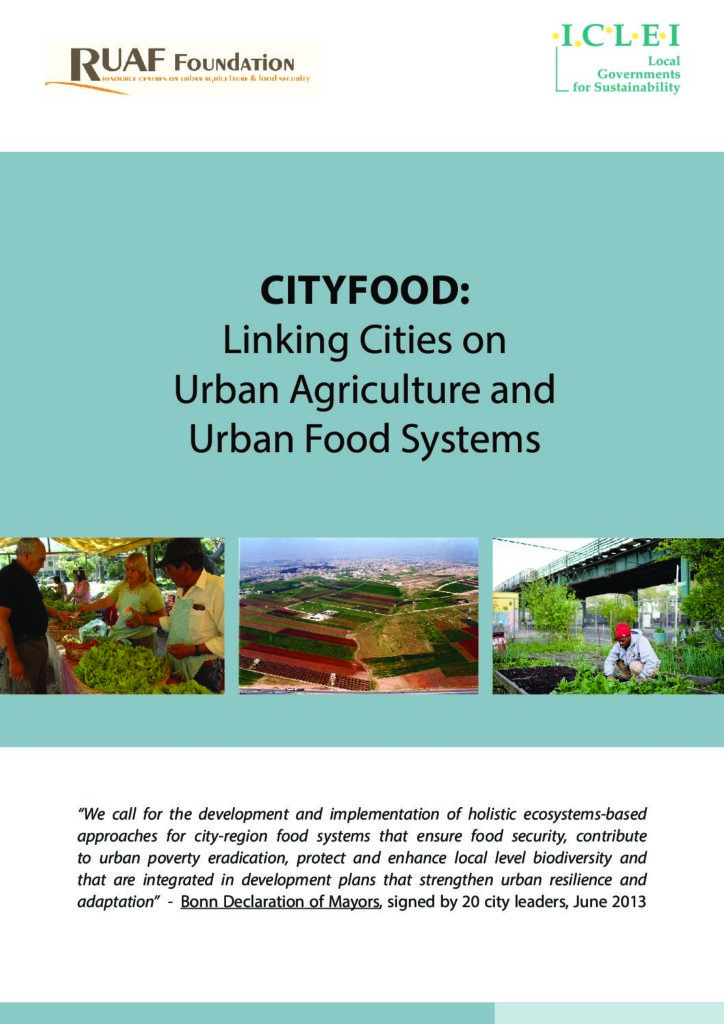Cities present constraints but also opportunities for building sustainable urban food systems. They can preserve food diversity, stimulate food innovations (short supply chains, urban agriculture, new forms of supply procurement, etc.), and have the potential to optimize resource
management, infrastructure and waste recycling.
Examples of successful city food strategies include:
- Promoting and integrating urban agriculture in city planning, zoning and building standards.
- Including urban and peri-urban agriculture and forestry in land use planning, city climate change adaptation and disaster risk reduction.
- Preferential public food procurement for the public sectors (hospitals, schools, offices).
- Productive and safe reuse of urban waste and wastewater in urban and peri-urban agriculture.
- Supporting food projects for the urban poor/disadvantaged.
- Supporting local small and medium enterprises in food processing and distribution.
- Promoting innovative forms of multi-functional agriculture.
- Short chain marketing and value adding by farmers in the city region .
- Use of smart and local food labels.
- Supporting farmer markets and local food hubs.
- Education and learning opportunities on “Good and Healthy Food” production, consumption and nutrition.
- Forming Food Policy Councils or Platforms.
- Reducing food waste and linking to Food Banks.

